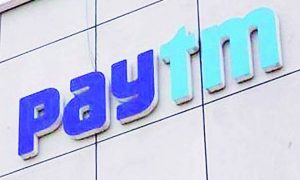Apart from managing funds for the National Pension System (NPS) through the LIC Pension Fund Trust, the Life Insurance Corporation (LIC) of India has introduced its own plan – New Pension Plus (NPP) – which is similar to NPS.
To help you choose a pension plan, let’s compare the features of NPP, NPS (voluntary Tier-1 Account) and Public Provident Fund (PPF), which is also a hugely popular investment option for accumulating retirement corpus.
Here are the comparison between NPP, NPS and PPF:
Read More: LIC Aadhaar Shila: Invest Rs 29 Daily in This LIC Policy, Get Rs 4 Lakh Return on Maturity
Eligibility
NPP: An individual between 25 years (last birthday) and 75 years (last birthday) of age may open an NPP account with the LIC of India.
NPS: An individual between 18 to 70 years of age may open an NPS Tier-1 account.
PPF: A PPF account may be opened by an individual of any age. But for an individual below 15 years of age, the account has to be opened by his/her guardian.
Investment period
NPP: The minimum investment period is 10 years and the maximum is 42 years.
NPS: The minimum investment period is 3 years (for those who joined NPS after 60 years of age) and the maximum investment period is 57 years.
PPF: The investment period is 15 years, which may be extended after the completion of 15 years for any number of times for a block of 5 years.
Read More: PNB Raises FD Interest Rates For Senior Citizens, Super Senior Citizens; Offers Up To 6.9%
Exit Age
NPP: Normally, an individual may exit NPP and opt for pension as early at 35 years of age. The maximum exit age or the vesting age is 85 years.
NPS: The normal exit age is 60 years and the maximum or the extended exit age is 75 years.
PPF: An individual may exit PPF normally after the completion of 15 years or may continue by extending it for a block of 5 years any number of times. So, the exit age will depend on the entry age. However, for minors, the minimum exit age is 18 years.
Nature of investments
NPP: It is a market-linked or unit-linked product with variable risks depending on the Investment Fund Option chosen.
The Investment Fund options are – Pension Bond Fund (Low Risk), Pension Secured Fund (Lower to Medium Risk), Pension Balanced Fund (Medium Risk), Pension Growth Fund (High Risk) and Pension Discontinued Fund.
NPS: This is also a market-linked investment product having various investment fund options.
The fund options under active choice are –
Asset class E – Equity and related instruments (Higher Risk)
Asset class C – Corporate debt and related instruments (Medium Risk)
Asset class G – Government Bonds and related instruments (Low Risk)
Asset Class A – Alternative Investment Funds including instruments like CMBS, MBS, REITS, AIFs, Invlts etc (Moderate to High Risk)
PPF: It is a fixed-return investment option without any market link.
Investment Limits
NPP: Under single premium option, the minimum investment is Rs 1 lakh and there is no upper limit. Under regular premium option, the minimum investments are Rs 3,000 under monthly, Rs 9,000 under quarterly, Rs 16,000 under half-yearly and Rs 30,000 under yearly premium options. There is no upper limit on premium.
NPS: The minimum yearly contribution in NPS Tier-1 Account is Rs 500 in a financial year, and there is no upper limit on voluntary contributions.
PPF: The minimum yearly contribution in PPF is Rs 500 and the maximum limit currently is Rs 1.5 lakh in a financial year.
Tax Benefits
NPP: The premiums payments in NPP are eligible for tax deductions up to Rs 1.5 lakh u/s 80C of the Income Tax Act. The commutation part at the time of maturity is tax free, while the regular annuity received after the start of the pension plan benefits will be added to the taxable income of the investor.
NPS: The contributions in NPS Tier-1 Accounts are eligible for tax deductions up to Rs 50,000 (over and above the 80C limit of Rs 1.5 lakh) in a financial year u/s 80CCD(1B) of the Income Tax Act. The commutation part (received after 60 years of age) will be tax free, while the annuity received after the start of the pension plan benefits will be added to the taxable income of the investor.
PPF: The contributions made in PPF are eligible for tax deductions up to Rs 1.5 lakh u/s 80C of the Income Tax Act. The interests received and the full maturity value are also fully tax free.
Utilisation of Maturity Amount
NPP: Up to 60 per cent of the maturity value may be commuted or withdrawn in lump sum, while the rest of the amount need to be used to purchase annuity plans from LIC of India or any other IRDA-regulated insurance company.
NPS: Up to 60 per cent of the retirement corpus may be commuted in lump sum at the age of 60 years or later, while the rest of the amount need to be used to purchase annuity plans from any IRDA-regulated insurance company.
PPF: The entire maturity amount may be withdrawn on maturity.
Amount Receivable on Death of Investor before Maturity
NPP: Higher of the fund value (available on the date of claim) or 105 per cent of the premium paid, along with guaranteed additions, if any, will be paid to the nominee.
NPS: The outstanding fund value on the date of claim will be paid to the nominee.
PPF: The outstanding balance in the PPF account on the date of claim will be paid to the nominee.
Charges
NPP: Various charges are levied either through deduction of units or through fixed payment in NPP. The charges include Premium Allocation Charge, Policy Administration Charge, Fund Management Charge, Switching Charge, Discontinuance Charge, Partial Withdrawal Charge, Tax Charge and Miscellaneous Charge.
NPS: Various charges are involved in NPS also. Such charges include PRA (Permanent Retirement Account) Opening Charge, Annual PRA Maintenance cost per account, Initial Subscriber Registration Charge, Initial and Subsequent Contribution Charges, Asset Servicing Charges, Investment Management Fee, Processing Fee for Exit / Withdrawal, etc.
PPF: There are no separate charges levied on PPF.





































